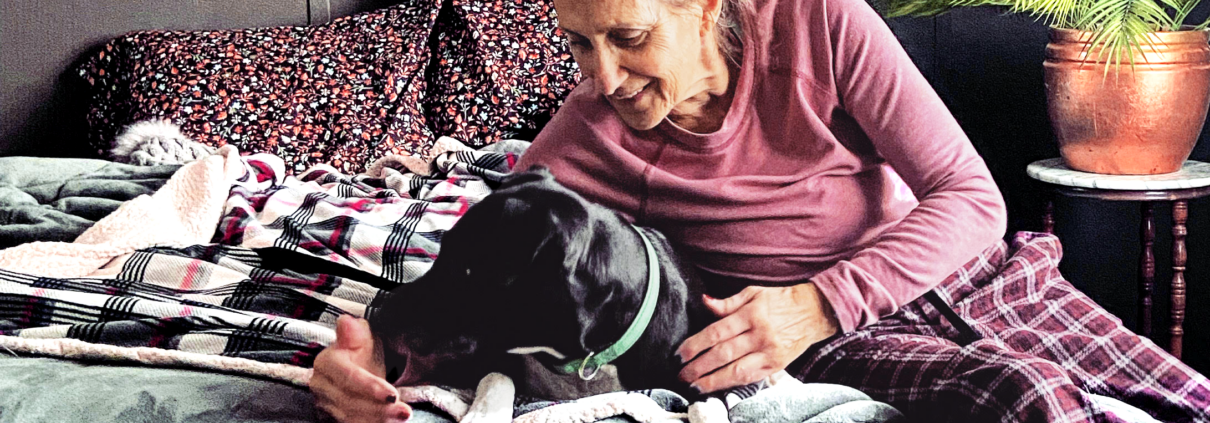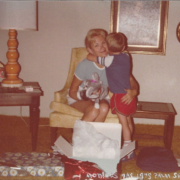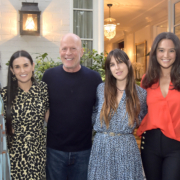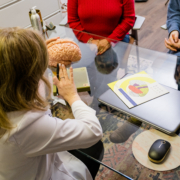Mourning of the inanimate
It wasn’t the first time I had migrated from one parent’s house to the other’s. Eleven miles door-to-door and a world apart. “Something was wrong” with Mom, but a diagnosis was at arm’s length. As imperative as it was to address the jarring interruption to what I had previously understood her to be, getting an answer was paralleling the first page of what was expected to be a poignant new life chapter.
I hesitated to turn the page.
Having stretched the task over several weekends, I moved my belongings into Mom’s house. I was a broke thirty-something who had spent the totality of my savings a couple years prior on a six-and-a-half-month solo road trip around the United States. It was early September 2019, and I couldn’t afford to continue paying my dad the few hundred dollars a month he was charging me for rent. The bucket list travel had been a lived-out dream I’d repeat a thousand times over if I could, but after the trip I was back to substantiating paycheck to paycheck. With pride tucked between my legs, I went from low rent to no rent, accepting a humbling perk of familial cohabitation as an adult.
I recall placing my camera on a rocking chair in the front room of her house, a temporary placement among the boxes of knickknacks and clothes. It sat tucked inside an innocuous black bag, unbecoming of its gravity. My out-of-date smart phone had sufficed for documenting worldwide travels for years, but I had recently upgraded to point-and-shoot. To this day I am proud of all I had captured on the phone, but there’s an ego feeding self-assurance to finally owning “real” photography equipment.
Months after my previous birthday Dad casually offered to give me money toward a camera. (Originally, he opted to fund a hitch for my car, but after I did not take him up on the original offer, he concluded there was little interest in that specific generosity.) But I sure did perk up when he came across a springtime Target ad for a Canon Rebel bundle, a suitable starter kit for an amateur photographer looking to upgrade her equipment. Forty-five minutes after the proposal I was standing in the electronics department of the store waiting for the employee to unlock the glass display case. The heart palpitations confirmed that this was the gift for which I had been longing. Dad graciously understood the impact of the pivot when I returned home with the box clutched tightly in my hands and a giddy, beaming smile as matching accessory.
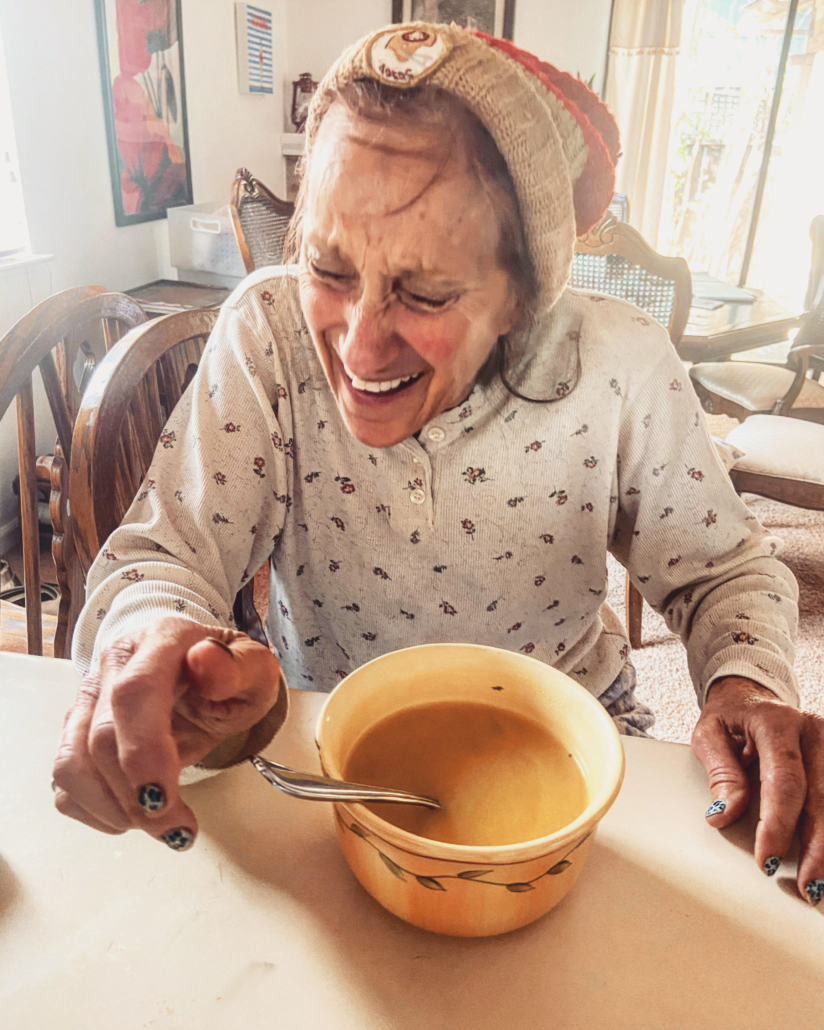
Mom always fed my hunger for creativity. With an appropriately supportive “Oh honey, that’s amazing” (or something of the like), she never failed to recognize each project regardless of its juvenile-handed craftmanship. My interest would wax and wane with varying mediums, but a few became woven into my being. I requested trips to the local craft or fabric store to garner beads for jewelry making, stamps and thick, velvety paper for homemade cards. These treasures would join the hoarded bins of paints and markers, journals, and dress-up clothes. Menus were made for special occasion meals that I crafted for hours; a home-room newspaper was fashioned with peers. To my dismay she riffled through bedroom drawers to read emotive poems about boys or depression, and embarrassingly, angsty notes directed toward her. It wasn’t lost to me that any good mother ought to express encouragement in their child’s interests, an obligation of love. As I got older, I understood this silent agreement between us that I would create and she would “Oooo” and “Ahhh,”but my ego luxuriated in it regardless.
In adulthood I narrowed my artistic efforts to writing, drawing, cooking, and later, photography. Honing them was continuous and boundless, a new-to-me definition of infinity. There was always more to make, lenses of perspectives to try on, skills to learn. Enter Alzheimer’s. Even as Mom faded, she was there for all of it. The more she leaned out of reality, the more I realized how precious her gift of support was. It’s intangible in the traditional sense, but it’s there in every production of my mind’s eye.
As of that move-in day, most of the photographs remained on the camera’s memory card. There was no urgency to upload and edit them at will. Their existence remained in the suspension of a plastic chip the size of a thumb, tucked in a cavity of the camera, hidden from the bright light of the living room by the protective barrier of a travel bag. A non-descript item amongst many, waiting to be unpacked into new shelves and drawers and wicker baskets for the guise of organization.
These were the tokens of the camera that I collected with gumption: Inky Joshua trees backlit with sorbet desert skies. Swirly rock striations of rust and cream, bookmarks of time. Brick walls swathed with city smog, fingertips, and speckled blood of unnamed revolutionaries assassinated by defunct reasonings. A sunrise more volcanic than its conical counterpart, igniting a landscape monument in the crook of its arch only in the brevity of time when light first reached it each morning. Tufa formations and earthy tears pooled into a lake more alien than Mars.
It wasn’t until weeks later, when I went to grab the camera to document an afternoon hike, that I realized it was missing. The longer it was out of sight, the more panic overtook me. Subsequently there were several occasions of feverishly looking in every space of the house to try and locate it. No, it wasn’t in any of the closets. Nor was it in the last of the moving boxes or under any furniture. The garage hadn’t gobbled it up.
Where the hell was it?
As revelations often are, a thought was born with certitude out of the nothingness of an ordinary day.
Again, I recalled bringing it into the house and gingerly setting it on the rocking chair to prevent it from getting jostled or knocked over. But this time I also remembered how Mom wanted to help with the move. In those earlier years she still maintained a compulsion to clean and organize, so she volunteered to pick up boxes and other nondescript packing materials as I unpacked. The human-sized black trash bag she held in my memory screamed at me. This was the first time I considered that Mom threw the camera—bag and all—away.
Was this truth? Or was I succumbing to the human urge to place blame on others for my own misplaced possessions? I didn’t care. The likelihood of the explanation seemed too obvious. I let the weepy, exasperated self-pity and tear-soaked hyperventilation take over. A still frame of the camera sitting mournfully in the garbage bin outside overtook my sanity. Of all the things she could have thrown away accidentally, why did it have to be that?
I can’t say for certain if I confronted her, but I have a feeling that I did. Not the shiniest reactionary decision to burden or shame my most consistent supporter when it was the disease, not her, that disposed of the camera.
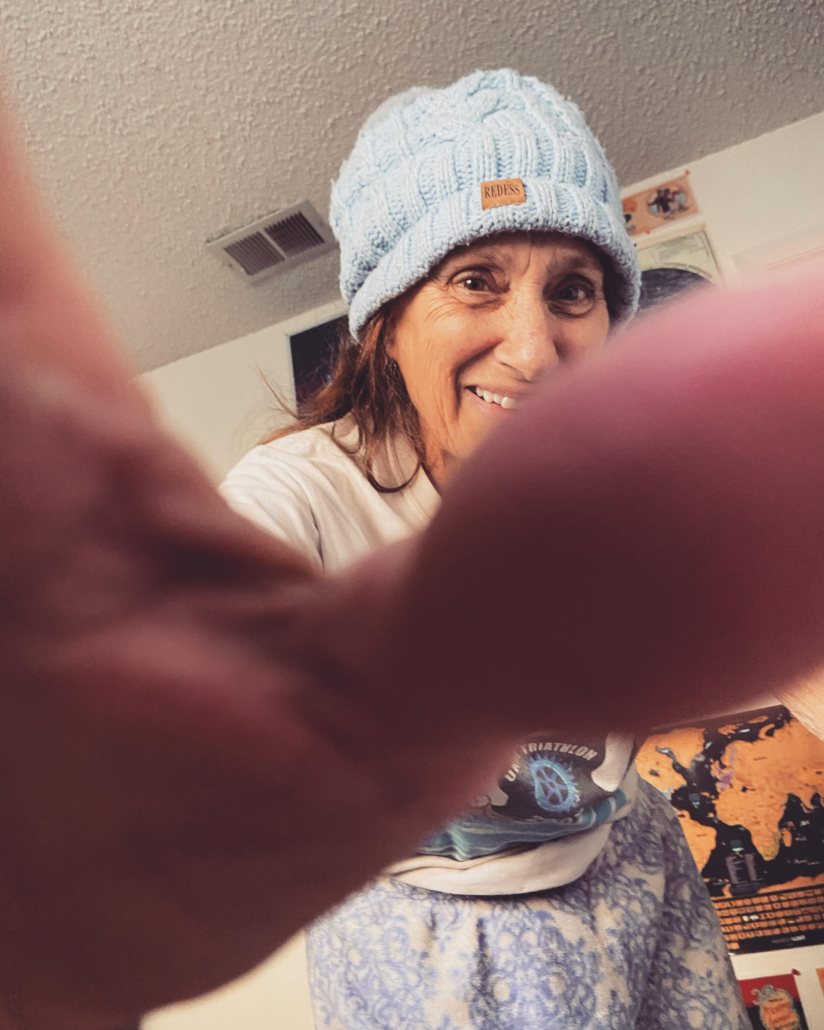
Four years later, when I found mom a placement in a memory care facility and began moving out, the overwhelming suspicion was all but confirmed. Aside from the decluttering I had done during the pandemic and multiple wildfire evacuations, there were months upon months of preparation for the inevitable next step. The house needed to be renovated and staged to be sold. The profits were the only way to pay for Mom’s expenses as a soon-to-be resident of a place where others would care for her. I was both being set free from caregiving and saying goodbye to a version of us that we’d never meet again.
In my last hours at the house, I breathed in the bareness of each room. There was nowhere for a camera to hide. No corner or nook unexamined. Every possible resting place had been eliminated. It stung less than before, but I mourned it along with the swelling of so many goodbyes. Admittedly, that specific anguish had dulled when a stranger had gifted me the exact same camera bundle sometime in the last months before moving.
I had come across an online posting in a neighborhood group. The owner of the camera wanted to give it to someone who would use it with much more gumption and appreciation than she had. Close to a hundred people left comments of varying degrees, asking to procure the unusually high-value offering. My own comment thanked the woman for her generous act of kindness and briefly explained that my Alzheimer’s ridden mother had accidentally thrown mine away. It was the truth, but still felt slightly sticky to expose the transgression. I was sure that the camera would find its way into someone else’s hands, anyway. I had never seen so many responses to a post before.
Instead, this wayward camera became mine.
There is still disbelief when I see the device and its pack nonchalantly sitting in the room of my new home. It’s like the space in a book between the end of the last chapter and the beginning of the next. Definitive. Small, yet vast with meaning despite being nothingness sandwiched between the profound.
Sometimes I speak a quiet offering of gratitude to the woman, but also for my mother. It felt like everything had come full circle. Surely, somehow, Mom had a hand in that.
For additional information about processing grief and loss as Alzheimer’s disease progresses, visit this Alzheimer’s Association page on the subject. Another good resource for families: The 36-Hour Day.
This essay has been factchecked by members of NAN’s Publications Committee. For more about that process, click here.
Lauren Ahlgren is a writer and swim instructor in Bend, Oregon.

